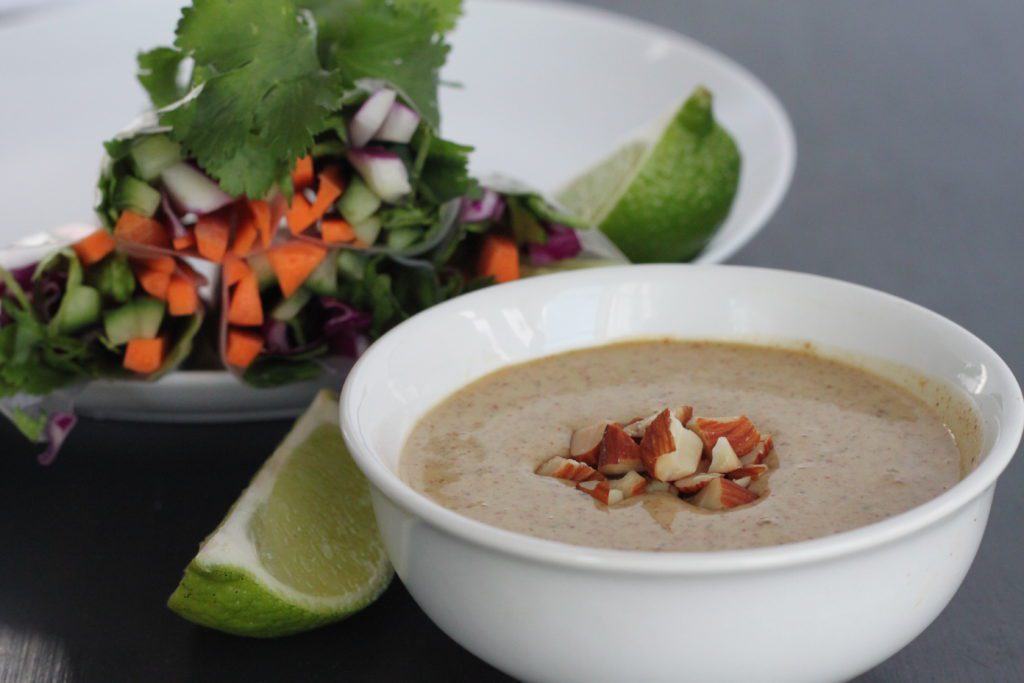
💥 Lowest price possible: on the Nutrition Coach Starter Package. Limited # left.

Almonds are the edible seeds of the fruit of the almond tree. Contained within a hard outer shell, almonds are a golden brown color with an oval shape. Nutritionally, almonds have a lot to offer, including some protein, fiber, healthy fats, and vitamins and minerals (especially vitamin E) in one tasty, easy-snacking package. When buying almonds, look for raw nuts without added seasonings, additives, or processing. Raw almonds are easily toasted at home in the oven for extra flavor. Enjoy almonds on their own, add them to savory dishes, or include them in baking.
Almonds are the edible seeds of the fruit of the almond tree. They have a delicate, slightly sweet flavor.
Though we refer to almonds as nuts, in botanical terms they are not actually a true nut. They come from a stone fruit which contains a pit inside; that pit is the almond shell and inside that pit is the almond nutmeat.
Almonds were first commercially grown in the Mediterranean. Today, the US joins Spain and Italy among the world’s top producers. Most American almonds are grown in California.
Almonds are oval-shaped with one rounded end and one pointed end.
The shell has the same shape as the nut inside, but the shell itself is pale-colored, with tiny holes throughout. It resembles a peach pit, quite suitably, because the almond fruit itself is a bit similar to other stone fruits like peaches and plums.
Almond nutmeat is covered in a very fine, thin skin, which has a golden brown hue with fine lines streaking through the coloring. Underneath their fine skin, almonds are a pale beige color.
One-quarter cup of whole, raw almonds contains 207 calories, 7.6g of protein, 17.7g of fat, 7.7g of carbohydrates, 4.5g of fiber, and 1.6g of sugar.
Almonds are a very good source of vitamin E, and a good source of riboflavin, magnesium, and manganese. Almonds also contain phosphorus, potassium, copper, and calcium.
When shopping for almonds, you have a few choices. You can buy whole almonds in the shell if you like; these are great for snacking but you’ll need a nutcracker to break through to the nutmeat.
Shelled almonds make for convenient snacks and are great for cooking. When choosing shelled almonds, look for raw almonds. These are the nut, pure and simple, with no added flavors.
You may also choose unsalted, dry toasted almonds. The toasting process lends a nutty, roasty flavor and makes the nuts extra tasty to eat. (Keep in mind that dry toasted almonds are different than regular “roasted” almonds, which are cooked in oil and may also contain salt.)
Some recipes call for slivered almonds, sliced almonds, or whole blanched almonds. These almonds are pale because the skin has been removed. You can usually find these types of almonds in the baking section of your supermarket.
Check the ingredients when buying almonds, especially “honey roasted” almonds, flavored almonds, candy-coated almonds, or almonds included in “trail mix”. These are a processed version of the nut which usually contain oils, additives, and seasonings such as salt and sugar (even if they are marketed as a health food). They may be tasty but they have a very different caloric and nutritional profile than the plain nuts.
If buying almonds in bulk, choose whole, unbroken nuts with smooth, tight skin. Avoid nuts that are discolored, broken or shriveled. If you can, give them a smell — they should smell fresh, not “off” in any way — and even better, a taste. They should be mildly sweet and a bit crunchy, not bitter or oily.
If buying almonds in a package, double check the ingredients to be sure it contains nothing but nuts, and check the expiry date for freshness.
Keep nuts in their package until the expiry date.
Nuts purchased in bulk should be kept in an airtight container and kept in a cool, dry place such as a refrigerator. They should last for about three months. If you wish to store them for longer, keep them in the freezer.
Almonds still in the shell will require a nutcracker. Simply crush the shell, release the nut and enjoy.
Shelled almonds are ready to eat. If you want to add extra flavor to your almonds, toast them by putting them on a baking sheet and baking at about 350 degrees Fahrenheit for about 5-10 minutes or until fragrant.
Almonds are great in both sweet and savory preparations. Toasted almonds make great additions to salads. Chopped or sliced almonds can be a lovely topping for vegetable dishes (such as sauteed green beans or a brussel sprout gratin). They also make a simple snack or a nice addition to a cheese tray.
Almonds can be turned into almond ‘milk’ whereby soaked almonds are pureed and added to water. Some people appreciate almond milk as a dairy alternative. (If purchasing almond milk rather than making your own, be sure to check the ingredients on the package. Many milk substitutes include sugars, other seasonings, additives and preservatives and not very much of the nut itself.)
For desserts, almonds are great in cookies and candy. For example, try making your own almond bark. To do this, scatter dry toasted almonds on a baking sheet lined with parchment paper. Melt good quality dark chocolate, then pour over the almonds. Use a spatula to smooth out the mixture and make sure the almonds are fully coated by the chocolate. Sprinkle a little sea salt delicately over top. Then freeze well, preferably overnight. Remove the baking tray from freezer and crack the chocolate with your fingers into rough pieces. You now have a tasty treat to enjoy or share as a gift!

Whether you have a peanut allergy or not - this dip provides a different spin on an old favorite. The almonds lend a bit more texture and a different nutritional boost - and you'll have the same spicy kick of a traditional peanut sauce. This sauce is the perfect addition to any vegetable.
Prep Time: 10 minutes Cook Time: 0 minutes Yield: 1 cup
Add all ingredients to a food processor and blend until smooth. If your almond butter is thick, you may find you need to add a bit more coconut milk or water to thin it out to your desired consistency – it should be creamy, but not runny.
Serve with fresh spring rolls or veggies.
Precision Nutrition’s Encyclopedia of Food expands every single month as we highlight new foods and showcase beautiful food photography. If you’d like to stay up to date, simply click this link. From there, we’ll send you a FREE copy of our recipe book. We’ll also let you know when new and delicious foods are added to the site.
Almonds are the edible seeds of the fruit of the almond tree. Contained within a hard outer shell, almonds are a golden brown color with an oval shape. Nutritionally, almonds have a lot to offer, including some protein, fiber, healthy fats, and vitamins and minerals (especially vitamin E) in one tasty, easy-snacking package. When buying almonds, look for raw nuts without added seasonings, additives, or processing. Raw almonds are easily toasted at home in the oven for extra flavor. Enjoy almonds on their own, add them to savory dishes, or include them in baking.